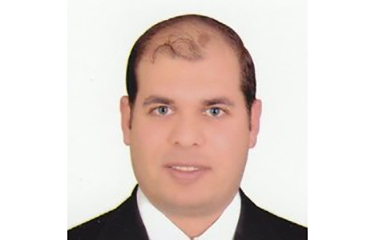Egypt’s skyrocketing aquaculture production has triggered a sustained spike in demand for aquafeed, substantially pushing up production costs.
The share of aquaculture in Egypt’s total fish production between 2000 and 2015 rose from 47 percent to 78.8 percent, reaching 1.23 million metric tons (MT). Egypt's government hopes to continue to increase per capita fish consumption as a means of providing an affordable, domestically produced protein source to its quickly-growing population of nearly 100 million, according to Alaa Badr, product manager at Skretting Egypt, an affiliate of Skretting, itself a wholly owned subsidiary of the Netherlands-based feed group Nutreco and a world leader in the manufacture and supply of aquaculture feeds.
“With 900,000 [MT] of tilapia harvested annually, Egypt has risen to become the sixth-largest aquaculture producer in the world,” Badr said. “A significant production peak began in 2005 because of the number of farms that spread alongside the Nile river shores in Damietta and Rosetta, and the growth is projected to continue as it is a governmental direction to satisfy Egypt’s Vision 2030."
According to the U.S. Department of Agriculture, the rise in aquaculture production in Egypt is mainly attributed to significant expansion in the application of new technologies such as the use of extruded feed, water circulation systems, and improved farm management practices. But the growth of Egypt’s aquaculture production – which is the largest in Africa and outpaces producers such as Norway and Chile – has triggered huge demand for fish feed, which has largely been met by importing soybean meal.
“The feed industry estimates that [Egypt's] aquaculture feed market demand will exceed 1.5 million MT annually by 2020,” USDA said.
The USDA estimates Egypt’s aquaculture feed market will exceed 1.5 million MT by the end of this year, with the country’s more than 70 privately-owned mills expected to produce 90 percent of the total feed output. Currently, 80 to 85 percent of the feed comprises conventionally pelleted products, while 15 to 20 percent are extruded feeds. And 30 to 40 percent of the feed is comprised of soybean meal, as opposed to more expensive fishmeal, which comprises between 5 to 22 percent of feed in the country. And Egypt will continue to rely on soy for fishfeed moving forward, according to the USDA, which estimates that by the end of 2020, Egypt's soybean crush capacity will increase to 15,000 tons “due to increasing animal feed demand.”
“By 2020/2021, aquaculture will account for 67 percent of the total growth of soybean meal demand,” the department said.
Growing demand for aquafeed has created opportunities for companies such as Skretting and Aller Aqua, which have expanded their existing manufacturing facilities, opened new feed plants, and launched new products specifically tailored to Egypt's aquafeed market. Skretting formed an Egyptian division in 2008.
“Skretting Egypt has launched state-of-the-art global products for tilapia, based on research and development results from the Skretting Aquaculture Research Centre,” Badr said. “The tilapia grower products target higher farm productivity and decreased losses, with a focus on flexible ingredients formulation based on digestibility.”
According to Badr, while developing Optiline, Skretting specifically analyzed the specific nutritional requirements of four different life sizes of tilapia, covering fish from 25 grams to 1,000 grams.
“Skretting’s Optiline feed for grower tilapia delivers balanced nutrition that supports the different aquaculture systems,” he said.
Last year, Skretting launched Nutra for tilapia, a new product to the Egyptian market with distribution soon to be extended to Kenya, Uganda, Cote d’Ivoire, and Mali.
“The Nutra range consists of high-performance starter diets supporting first-feeding fry by providing the specific nutrients and right particle size for each life stage – from egg to fingerling,” Badr said.
Skretting has also introduced Protec for tilapia, which Badr describes as “a new functional diet especially designed to help support tilapia and enhance their ability to cope with during challenging situations, including the hot summer seasons.”
“Essentially, Protec for tilapia helps to support the natural defenses of the fish, it supports the immune system and it optimizes the balance between fish, microbes, and environment,” he said.
The future of Egypt’s aquaculture market, which is overseen by the General Authority for Fish Resources Development, looks very bright, according to Badr. That’s especially true for the production of Nile tilapia, which Badr said “is the cornerstone of fish farming in Egypt, making it by far the biggest aquaculture producer in Africa.”
Nile tilapia is popular with Egyptian fish farmers because of its affordability, tolerance, to high-density production methods, faster growth rates, resistance to disease, and love for an omnivorous diet, he said.
“Right now, the Egyptian fish and seafood market shows rapid growth,” Badr said.
Photo courtesy of Skretting Egypt







